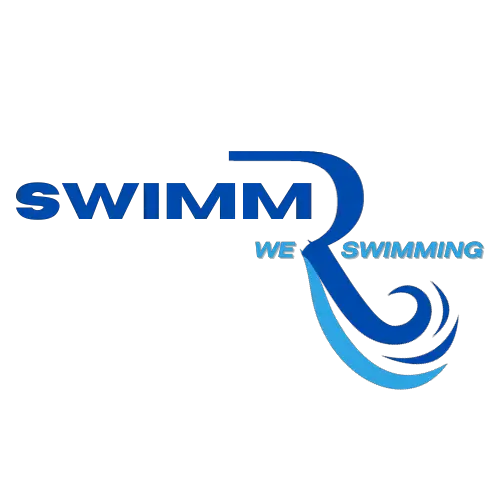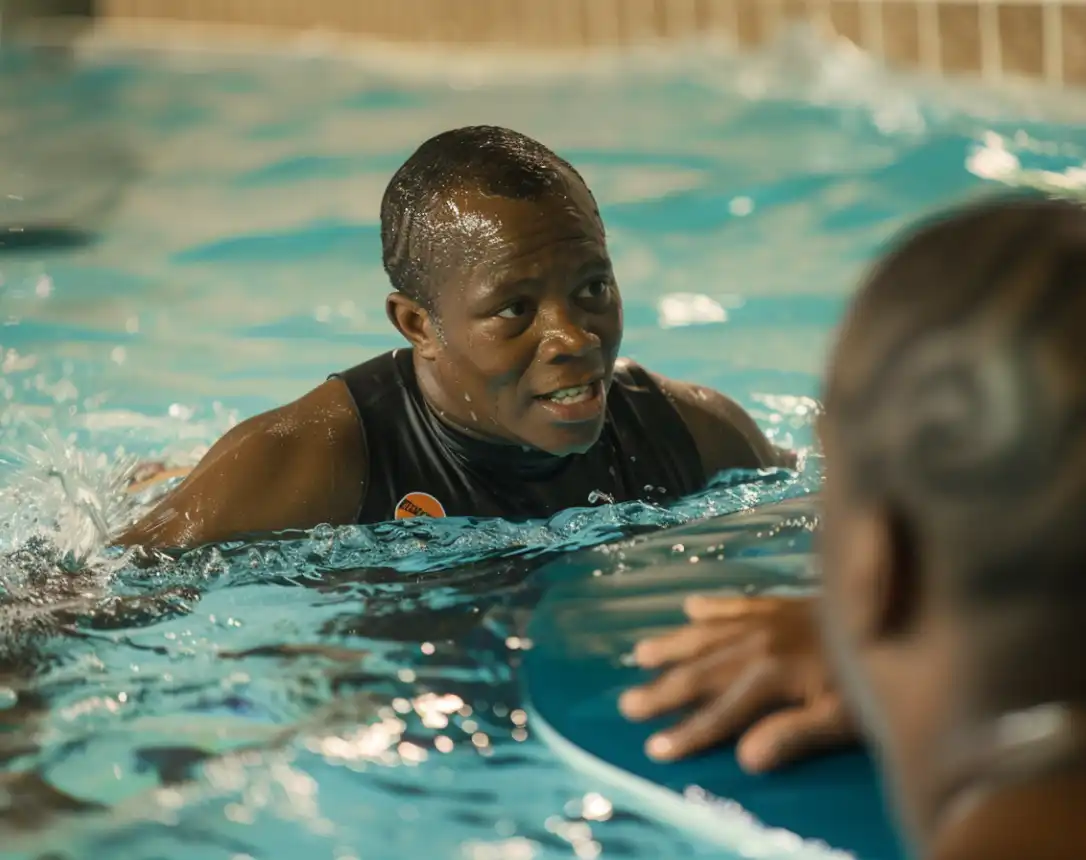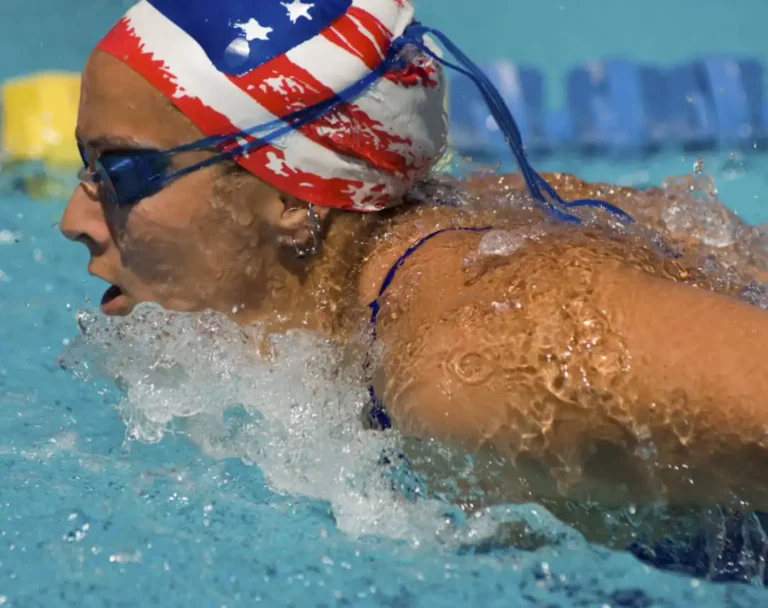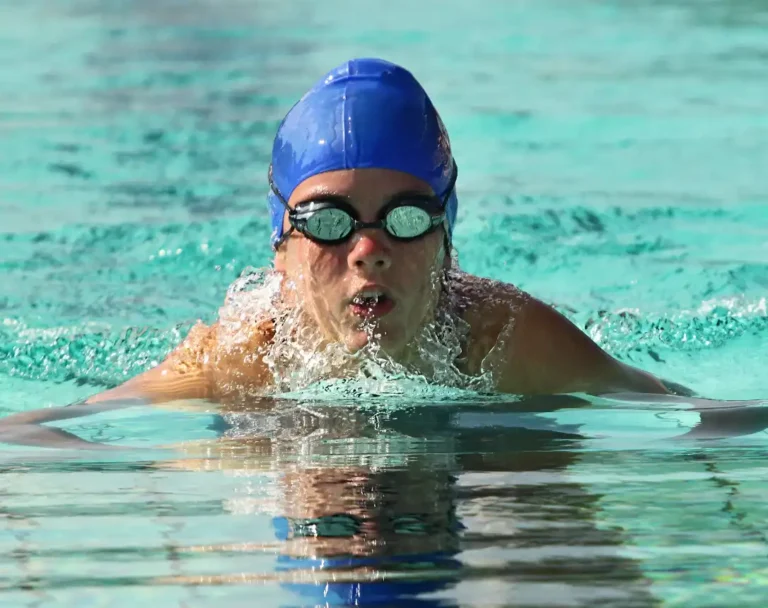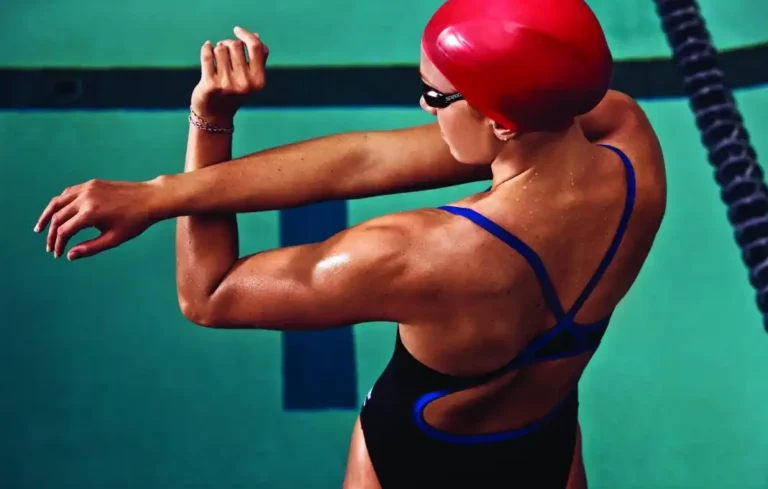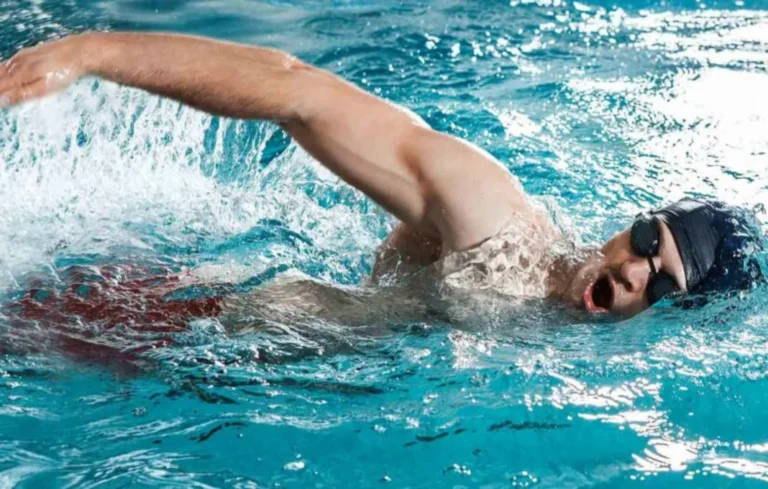Embark on a transformative journey with our guide to swimming instruction, where every lesson is a step closer to mastering the waters. Whether you’re just dipping your toes in or aiming to refine your strokes, effective swimming instruction opens the door to improved technique, confidence, and enjoyment in the pool.
From the first splash to the perfect dive, let’s navigate the path to becoming a proficient swimmer together. Ready to enhance your skills with expert guidance? The journey begins now.
Introduction to Swimming
I’ve discovered that swimming isn’t just a skill, it’s a transformative activity touching every facet of life. It caters to all ages and is a cornerstone for maintaining fitness; especially for your lungs and heart.
Benefits of Swimming
- Improved Cardiovascular Fitness: Regular swimming increases heart rate without stressing the body, improves circulation, and contributes to overall heart health.
- Enhanced Lung Capacity: Swimming requires controlled breathing, which can improve lung function and oxygen consumption.
- Versatility for All Ages: Whether you’re a toddler or well into your senior years, swimming offers a safe exercise option.
- Full-body Workout: Engages multiple muscle groups simultaneously, promoting muscle strength and endurance.
History of Swimming
- An Ancient Practice: Humans have been swimming for millennia, with depictions in cave paintings dating back 7,000 years.
- Evolution of Techniques: Over time, swimming has evolved from a survival skill to a competitive sport with various stroke styles.
- Olympic Recognition: Introduced in the 1896 Olympics, swimming has become a prestigious competitive arena showcasing global talent.
Learning the Basics
Stepping into the world of swimming takes courage and a bit of excitement. I remember my first time—it’s the rush I felt when I realized each stroke made me a part of the water. Swimming isn’t just an essential skill; it’s a path to freedom in the water. Now, let me guide you through what you need to learn. Trust me, mastering the basics is the key to gliding through the water with grace.
Swimming Fundamentals
We begin with body position. Keeping a streamlined form is crucial; think of it like slicing through the water. Your body should be flat, horizontal, and as straight as an arrow. Start practicing in shallow water, where your feet can touch the bottom. Floating is an essential skill that involves lying on your back and staying afloat with gentle motions of your hands and feet. This is survival 101 and paves the way for more advanced techniques. Remember, patience is your ally here.
Basic Swimming Techniques
Now, let’s talk about the flutter kick. This kick is a staple; a series of small, fast kicks right from your hips. Partner it with the pull, the motion your arms will make. The golden rule for beginners: Start slow. Imagine your hands as paddles, scooping through the water, while your legs maintain a rhythm below. Combine the two, and you’ve got the makings of the freestyle stroke. Once I got the hang of this, swimming became much more than a skill—it became a joy.
Breathing Techniques
Breathing might seem natural on land, but in the water, it’s an art. While swimming, turn your head to the side during the pull to take a breath—inhale quickly and turn back into the water to exhale. Sounds simple, but timing is everything. Do this in a relaxed, rhythmic manner, and it becomes a dance—inhale to the side, exhale into the water. There, my friend, you’ve got the basics of breathing while swimming. Once this clicked for me, I could finally swim laps without feeling like I was fighting for air.
Swimming Strokes Explained
I’m thrilled to guide you through the various swim strokes that you can master to enhance your swimming technique. Each stroke is like a key that unlocks a whole new level of efficiency and prowess in the water.
Freestyle Technique
Known as the front crawl, freestyle is the most common stroke featuring alternating arm movements and a flutter kick. Here are the essentials:
Arm Movement:
- Stretch one arm forward, palm down.
- Pull water toward you, bending the elbow in a ‘S’ path.
- Lift the arm out of the water, returning to the initial position.
Leg Movement:
- Perform a steady flutter kick, alternating legs.
- Keep your legs straight but relaxed.
Breaststroke Technique
Breaststroke requires synchrony of arms and legs with a gliding phase. Pay attention to these critical parts:
Arm Movement:
- Start with hands together, thrust arms forward.
- Sweep arms outwards and then inwards in a heart shape, returning hands to the chest.
Leg Movement:
- Bend your knees and feet backward.
- Kick out in a circular whip-like motion, then glide.
Backstroke Technique
Swimming on the back, backstroke demands a continuous flutter kick and alternating arms:
Arm Movement:
- Move one arm in a circular motion, pinky entering the water first.
- Alternate with the opposite arm in a windmill pattern.
Leg Movement:
- Initiate a flutter kick from the hips.
- Keep your feet close to the water surface.
Butterfly Stroke Details
The butterfly stroke is both powerful and technical, involving a dolphin kick and simultaneous arm movement:
Arm Movement:
- Extend arms in front, thumbs first.
- Pull hands toward your waist, then lift out of the water, returning them forward.
Leg Movement:
- Keep legs together and perform a dolphin kick.
- Push water downwards with your feet to propel yourself forward.
I hope this rundown excites you to try these strokes and find your favorite!
Improving Your Skills
As a swimmer dedicated to refining my strokes and speed, I’ve discovered that focused practice and smart workout regimes revolutionize my performances. Advancing from intermediate to expert requires not just time in the water but also targeted swimming drills that challenge my propulsion and resistance while strengthening key muscles to improve timing. Let’s dive into the specifics.
Intermediate Techniques
At the intermediate level, mastering the nuances of each stroke is crucial. I incorporate drills like the:
- 3-3-3 Drill for freestyle: which involves 3 strokes with the right arm, 3 with the left, followed by 3 full strokes, teaching me seamless bilateral breathing.
- Catch-Up Drill: which has me glide until one hand catches up to the other in front, honing my stroke’s efficiency.
These drills build muscle memory and refine technique, as I need to ensure each movement is deliberate, contributing to my overall propulsion through the water.
Advanced Swimming Drills
Advanced drills push me far out of my comfort zone, but the gains are undeniable. I focus on exercises like:
- Hypoxic Sets: to improve my lung capacity and oxygen management, I vary breathing intervals during laps.
- Resistance Training: with drag suits or parachutes, increasing my muscular strength and resilience.
Every session is a new challenge, but I see my timings get better, indicating progress where it truly matters.
Personalizing Your Workout
Customizing my workout allows me to target specific areas for improvement. I set goals for each session, whether it’s endurance, speed, or technique, and create a mix of:
- Distance Sets: for building stamina
- Sprints: to enhance my speed
By personalizing my workout, I’m not just practicing; I’m constantly learning how to swim more effectively, ensuring that every stroke takes me closer to my objectives. It’s exhilarating to see the transformation in my abilities with each personalized plan.
Professional Instruction
Target Keyword: When I first decided to advance my swimming skills, seeking professional instruction was a game-changer. Passionate and certified swim instructors bring out the best in your aquatic abilities, approaching each lesson with structured expertise that ensures progress.
Finding Swim Instructors
USA Swimming and U.S. Masters Swimming are excellent starting points for locating top-tier swim coaches. A well-vetted list of instructors can be found on their respective websites:
- USA Swimming: Find a Coach
- U.S. Masters Swimming: Coach Search
I look for instructors who align with my goals, ensuring they have the right certifications and a personality that encourages a positive learning environment.
Lesson Structures
Each swim coach might have their own way of crafting lessons, but there’s typically a common structure. Lessons often commence with:
- Warm-Up: Light swimming to loosen muscles
- Skill Development: Focused drills on technique
- Practice Sets: Repetition of new skills
- Cooldown: Gradual reduction of intensity
By adhering to this structure, instructors maximize the lesson’s effectiveness, and I feel my progress after each session.
Swim Coach Qualifications
Instructors should boast relevant qualifications, such as certification from the American Red Cross or equivalent. Additionally, many are affiliated with professional bodies like USA Swimming. My confidence in a swim coach soars when I see:
- Certifications: First Aid, CPR, and Coaching
- Experience: Track record of developing swimmers
- Endorsements: Membership in professional organizations
Choosing an instructor with the right blend of credentials and experience is crucial to my swim learning journey.
Swimming Safety and Regulations
I’ve never felt more alive than when I’m slicing through the water, each stroke an assurance of my respect for the power of the waves and the rules that keep me safe. Diving into the essentials of water safety and the regulations of swimming pools, along with what to do in an emergency, is not just a must—it’s my lifeline.
Understanding Water Safety
Water safety is about knowing your environment and your limits. Pools, lakes, and oceans all have different characteristics, and I make sure to check for water conditions, weather forecasts, and the presence of lifeguards. For communities, ensuring everyone has basic swimming skills and adheres to safe practices is crucial. It’s like this:
- Depth of water: always within my capabilities
- Swim with friends: never alone, camaraderie plus safety
- Constant vigilance for changing conditions
Swimming Pool Guidelines
Regarding swimming facilities, I always scrutinize the posted rules. Swimming safely in pools is serious business. Each facility likely has specific guidelines. Here’s a quick breakdown I adhere to:
- Walk, don’t run around the pool edge.
- No diving in shallow waters.
- Follow the facility’s capacity limits.
Emergency Procedures
If an emergency strikes, knowing what to do is non-negotiable. Pools should have clear emergency procedures displayed, and I ensure I’m familiar with them. A quick mental checklist:
- Location of lifesaving equipment: Know it like the back of my hand.
- Alert a lifeguard, or if none are present, call emergency services immediately.
- CPR knowledge can be a lifesaver; I stay certified.
Engaging with the Swimming Community
I’ve discovered that plunging into the swimming community is not only about enhancing my strokes but also about connecting with like-minded individuals. It’s a journey where each kick and arm pull makes me part of something larger. Here, the waters teem with opportunities for kids and adults alike to join clubs, compete, and keep their swim pace efficient.
Joining Swim Clubs
Joining a swim club is the first ripple in the water. These clubs offer structured training sessions, often adhering to USA Swimming guidelines, helping swimmers become more streamlined in the water. Here’s how you can dive in:
- Find a Club: Look for local swim clubs through USA Swimming’s club finder tool.
- Assess the Level: Ensure the club caters to your skill set, whether you’re a beginner or looking for advanced training.
- Get Involved: Participate in club events and volunteer to deepen your connection with the community.
Competitive Swimming
For those with a competitive streak, racing against the clock is thrilling. It’s not just about the medals; it’s about pushing your limits. Getting involved in competitive swimming can be highly rewarding:
- Start Small: Begin with local meets and work your way up.
- USA Swimming: They sanction events for children and adults, ensuring a fair and official environment.
Masters Swimming
And let’s not forget about U.S. Masters Swimming—where adults over 18 can continue to chase the rush of the race. It’s never too late to strive for personal bests or even national records.
- Join: Sign up with U.S. Masters Swimming to gain access to exclusive workouts and clinics.
- Compete: Enter local and national competitions, regardless of your pace or proficiency.
Swimming Gear and Equipment
When I hit the pool, gear is vital for both enhancing my workout and improving my technique. I ensure everything I choose from my apparel to my advanced gadgets serves a purpose, either to aid in my fitness regime or to help maintain a streamlined form that cuts through water with minimal resistance.
Essential Swimming Apparel
Swimwear: I always opt for high-quality, snug-fit swimwear. It’s crucial for reducing drag and keeping my body position optimal during every stroke.
Chlorine-resistant fabric is my go-to for durability, because let’s face it, I want my investment to last.
Goggles: A clear vision underwater is non-negotiable. I choose anti-fog and UV-protective goggles for both indoor and outdoor pools.
Swim Caps: They’re not just for hair protection; swim caps improve my head’s streamline and, in some cases, even help manage water resistance effectively.
Advanced Swimming Gear
Training Fins: For those days when I want to ramp up the intensity, I include fins in my workout. These handy tools add resistance, strengthening my legs and improving my kick technique.
Hand Paddles: When I’m focusing on my upper body strength and stroke efficiency, hand paddles are a game-changer. They increase the resistance as my arms pull through the water, which is ideal for building muscle.
Kickboard: Simple yet effective for isolating my legs, ensuring I can concentrate fully on my kick technique without worrying about my arm movements.
Streamlining my equipment choices is as important as streamlining my body in the water. My gear doesn’t just accompany me; it’s a critical part of my journey to becoming a fitter, faster, and more proficient swimmer.
Leveraging Technology
I’m thrilled to share how technology can revolutionize your swimming instruction! Harnessing tech ensures you won’t miss a beat in elevating your swim game.
Online Resources and Apps
When it comes to swimming instruction, there’s no shortage of online tools to keep me on track. From structured training plans to stroke-improving exercises, apps like MySwimPro offer a wealth of routines accessible with a tap. Here’s what I typically look for:
- Custom Workouts: Programs tailored to my specific swimming goals.
- Progress Tracking: Keeping a close eye on improvements over time.
Apps also connect me to a community, adding that extra splash of motivation.
Video Analysis for Technique
A game-changer for me in swimming instruction has been video analysis. It’s one thing to feel your stroke in the water, but quite another to see it. I record my sessions, looking out for:
| Focus Area | Key Benefits of Video Analysis |
|---|---|
| Stroke Technique | Identifies inefficiencies to correct. |
| Body Positioning | Ensures proper alignment in the water. |
| Turn Efficiency | Improves transitions and reduces drag. |
Analyzing videos is like having a coach available 24/7, offering invaluable insights into my swimming technique to fine-tune my performance stroke by stroke.
Beyond Basics
When you master stroke mechanics, it’s exhilarating! I keep thriving by honing my nutrition, mental game, and implementing cross-training. Let’s dive into these advanced skills that fuel our swimming journey.
Nutrition for Swimmers
Proper nutrition is pivotal for swimmers to perform at their peak. I make sure to balance my macronutrients (carbs, proteins, and fats) to address my energy needs. Complex carbs are vital before practice for sustained energy, while proteins help repair and build muscles. Pre- and post-workout meals are crucial, and I never underestimate the importance of hydration.
- Pre-workout meal: Whole grain cereal, low-fat milk, banana.
- Post-workout meal: Grilled chicken, quinoa, mixed vegetables, plenty of water.
Psychological Aspects of Swimming
Mentally, swimming is as demanding as it is for the body. I focus on goal-setting and visualization to fortify my mindset. A clear vision of my personal best during practice propels my ambition into reality. Addressing stress through breathing techniques and meditation can alleviate pre-race anxieties, enhancing my focus and performance.
- Daily practice: 10 minutes of visualization and breathing exercises.
Cross-Training for Swimmers
Incorporating cross-training strengthens muscles that swimming doesn’t always engage. I add activities like cycling and yoga to maintain overall fitness and prevent injuries. They also boost my cardiovascular strength, keeping my heart robust. Cross-training diversifies my routine, making each swim session more dynamic and effective.
- Weekly routine: 2 sessions of cycling, 2 yoga classes.
FAQ – Frequently Asked Questions
What should I look for in swimming instruction?
Seek experienced instructors, a structured program, and a focus on safety, technique, and personalized feedback.
How often should I take swimming lessons?
Consistency is key; aim for 1-2 lessons per week to steadily improve skills and build muscle memory.
Can adults benefit from swimming instruction?
Absolutely! It’s never too late to learn or improve, with adult-specific programs focusing on technique, fitness, and overcoming fears.
Thank you for exploring the world of swimming instruction with us. Whether you’re starting your journey or refining your strokes, we’re here to support your progress. Share your swimming instruction experiences and tips in the comments below.
